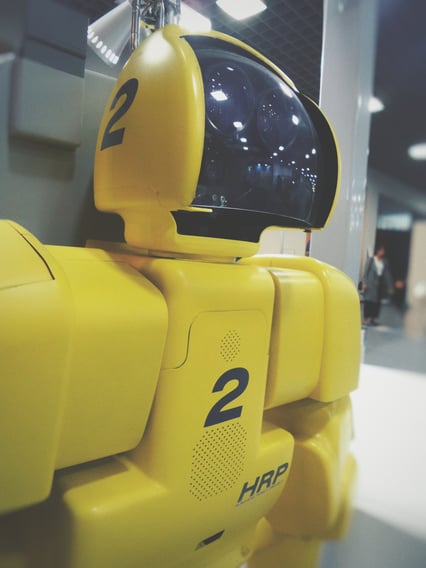REDWOOD LOGIN
Redwood PortalLTL
SCS
SCS Support
Rockfarm
 Contrary to popular belief, LTL carriers are not cash cows who grow money inside their cargo containers. Even larger transportation companies have budgets that they must adhere to in order to operate in the green. When it comes to the integration of artificial intelligence in the supply chain, money and cost is arguably the biggest hurdle that even LTL carriers need to eclipse. There are other issues that are causing a delay for transportation companies to introduce revolutionary AI systems into their daily operations. But those hurdles are not obstacles that can’t be overcome.
Contrary to popular belief, LTL carriers are not cash cows who grow money inside their cargo containers. Even larger transportation companies have budgets that they must adhere to in order to operate in the green. When it comes to the integration of artificial intelligence in the supply chain, money and cost is arguably the biggest hurdle that even LTL carriers need to eclipse. There are other issues that are causing a delay for transportation companies to introduce revolutionary AI systems into their daily operations. But those hurdles are not obstacles that can’t be overcome.
Noted below are a few of the ways that the largest LTL carriers are starting to handle AI integration, making it affordable, efficient, and effective.
The 5,000-pound gorilla in the AI room is cost – there simply is no denying this fact. AI solutions are not cookie-cutter systems. They are always customized to fit the needs of specific industries, companies, and in most instances, specific segments of an individual company. Artificial Intelligence is made up of several independent systems that are paired together in order to be effective.
Some of the individual systems that require connectivity with each other include hardware, software, and individual platform integration. The best attribute about AI systems is the fact that most of them are cloud-based and can be improved on a scalable factor. In fact, when it comes to dealing with cost, three areas that LTL companies deal with include:
• The initial investment for hardware: AI systems are powered by specialized hardware that users need to acquire to access the AI software. Depending on the solution, and size of the program, the initial investment to integrate AI can eclipse the six-figure level.
• Where to start: AI technology is quite scalable. However, the issue that LTL carriers deal with is where to start? AI systems might be cloud-based, but they typically require a higher level of users in order to be impactful. Discovering the starting point can take time, cost money on research, consultation from experts, and resources.
• Training employees: The integration of any new technology requires training. While many AI systems are easy to learn how to operate, LTL carriers struggle with the level of training that will ensure stakeholders are properly trained – without pulling away from daily business operations.
A smart business realizes that the best way to integrate something new is to create a plan. This is what most LTL carriers do when it comes to applying AI solutions into their daily operations. Any plan needs to have specific steps that need to be followed to ensure the plan is activated correctly and efficiently. Some of the common steps that supply chain participants use to integrate AI include:
• They check out how others have integrated AI: LTL carriers are not the only ones in the supply chain who are looking to integrate AI technology. In fact, companies like Amazon.com are at the forefront of AI-based solutions. When others who are involved in your industry but not necessarily competitors have applied AI, reaching out to them to ask how they completed the integration is a great first step.
• Invest in talent: Smart LTL carriers understand when something is outside of their areas of expertise. This is a major reason why they consult with an expert in artificial intelligence who can help them understand the pros and cons of these systems and provide a guide to installing the systems.
• They consider the people impact: AI is intended to reduce the dependence on the human. While people are needed today to operate AI systems, eventually they will replace many people to complete vital services. This is the main reason why larger companies use AI solutions. The smart LTL carriers consider the impact it has on their people – as the transportation industry is very much about people – and the relationships built within the industry.
AI is a great tool that can help to streamline multiple daily tasks that the largest LTL carriers must complete on a daily basis. One resource that shippers, carriers, and others in the supply chain can depend on is an experienced third-party logistics company. If you’re thinking about integrating AI into your operation, reach out to a 3PL – as they can help create a plan that allows you to successfully integrate AI solutions.